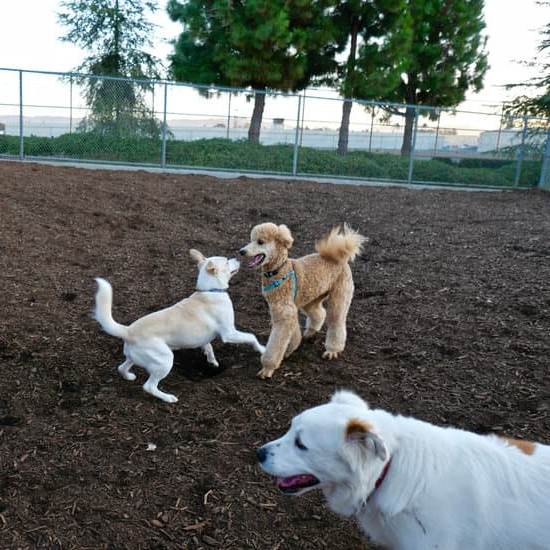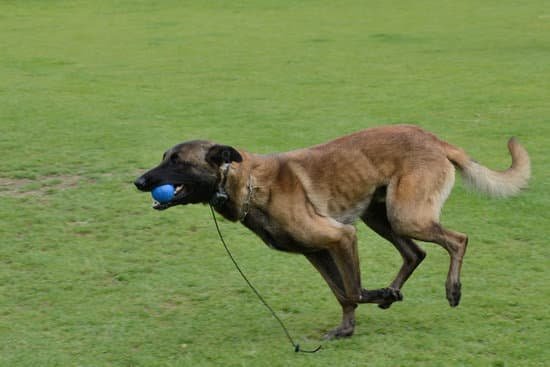Therapy dogs play a unique and invaluable role in providing comfort, support, and companionship to individuals in need. Whether it be in hospitals, nursing homes, schools, or disaster sites, these specially trained canines have the ability to bring joy and relief to those facing various challenges.
In this introductory section, we will explore what therapy dogs are and discuss the importance of their work in promoting physical and emotional well-being. Additionally, we will delve into the therapeutic benefits that these amazing animals offer to individuals of all ages.
Therapy dogs are not to be confused with service dogs or emotional support animals. While service dogs are trained to assist individuals with disabilities in performing specific tasks and emotional support animals provide comfort and companionship to their owners with mental health conditions, therapy dogs serve a broader purpose by offering affection, support, and stress relief to various populations. Their primary goal is to engage with people in need and help improve their overall well-being.
The effects of therapy dogs on individuals can be truly transformative. Research has shown that interactions with therapy dogs can reduce anxiety, lower blood pressure, decrease feelings of loneliness, and even improve cognitive function. These furry friends have an innate ability to provide unconditional love and genuine empathy. From helping children navigate through challenging situations to bringing smiles to the faces of elderly residents in nursing homes, therapy dogs have a remarkable impact on the lives they touch.
In the following sections of this article, we will delve deeper into the process of training a dog for therapy work. We will explore the necessary characteristics that make a dog suitable for this type of role as well as discuss crucial training techniques that ensure they are prepared for their duties.
Furthermore, we will guide you on how to enroll your dog in official therapy dog programs and provide insights on how to maintain their skills throughout their therapy career. Ultimately, our aim is not only to shed light on the essential training steps but also inspire others to consider training their own dogs to become therapy dogs, thereby making a positive difference in the lives of many.
Choosing the Right Dog for Therapy Work
Evaluating Necessary Characteristics and Temperament
When choosing a dog for therapy work, it is crucial to evaluate their characteristics and temperament. Therapy dogs need to be highly sociable, friendly, and gentle by nature. They should possess good impulse control and have the ability to remain calm in various environments. Additionally, they should be comfortable with being handled and touched by strangers. Dogs that show signs of aggression or fearfulness are not suitable for therapy work.
Considering Various Breeds
Different breeds have different characteristics that make them well-suited for therapy work. While any breed can potentially become a therapy dog, certain breeds are often more naturally inclined towards this type of work. Labrador Retrievers and Golden Retrievers, for example, are known for their friendly and calm demeanor, making them popular choices for therapy dog programs. Other breeds such as Poodles, Beagles, and Collies also excel in therapy work due to their intelligence and adaptability.
If Your Own Dog Possesses Potential
If you already have a dog and are considering training them to be a therapy dog, it is important to assess their suitability for this role. Look for signs of sensitivity and friendliness in your dog’s behavior. Can they remain calm when meeting new people? Do they enjoy being touched?
Are they easily trainable? If your dog exhibits these qualities and has a desire to interact with others, they may have the potential to become a therapy dog. It is recommended to consult with a professional trainer or evaluator who can provide guidance in determining your dog’s aptitude for therapy work.
Choosing the right dog for therapy work is essential in ensuring their success as well as the well-being of those they will be helping. By evaluating necessary characteristics and temperament, considering various breeds, and assessing your own dog’s potential suitability, you can make an informed decision that lays the foundation for a successful therapy dog.
Preparing Your Dog for Therapy Work
Before your dog can become a therapy dog, there are several important steps you need to take to prepare them for this important role. This section will outline the key factors to consider and the necessary preparations you should undertake.
First and foremost, essential obedience training and mastering basic commands are crucial for therapy dogs. These commands include sit, stay, come, leave it, and walking calmly on a leash. Therapy dogs need to be well-behaved and responsive to their handlers in a variety of settings. This not only ensures their own safety but also allows them to provide comfort and support effectively.
Socializing your dog is another critical aspect of preparing them for therapy work. Your dog should be comfortable with various environments, including different indoor and outdoor settings. They should also be exposed to different individuals, such as children, adults, and the elderly. The more exposure your dog has to diverse situations and people, the better prepared they will be to handle the unpredictable nature of therapy work.
Furthermore, ensuring that your dog is up-to-date with all necessary vaccinations is vital for their health and the safety of those they will interact with during their therapy visits. Regular health check-ups are also necessary to detect any underlying medical conditions or discomfort that may interfere with their ability to perform therapy work.
Overall, preparing your dog for therapy work requires a combination of training, socialization, and proper healthcare. By investing time and effort into these preparations, you can set your dog up for success in their future role as a therapy dog.
| Aspect | Key Factors |
|---|---|
| Obedience Training | – Mastering basic commands (sit, stay, come)
|
| Socialization | – Exposure to diverse environments (indoor, outdoor)
|
| Healthcare | – Up-to-date vaccinations
|
Enrolling Your Dog in Official Therapy Dog Programs
Once you have prepared your dog for therapy work and feel confident in their abilities, it is essential to enroll them in an official therapy dog program. These programs provide structure, guidelines, and support to both dogs and their handlers, ensuring they are well-equipped to provide effective therapy to those in need.
To begin, take the time to research and select a reputable therapy dog organization to join. Look for organizations that have established standards and protocols for therapy dogs, as well as a strong reputation within the community. Some well-known therapy dog organizations include Therapy Dogs International (TDI), the American Kennel Club’s Canine Good Citizen program (CGC), and Pet Partners.
Next, familiarize yourself with the evaluation and certification processes required by these organizations. Each program will have its own set of criteria that your dog must meet in order to become certified as a therapy dog. This may include passing a temperament test, demonstrating good obedience skills, and being comfortable around various types of people and environments.
Once your dog has successfully completed the evaluation process and received certification, a world of opportunities will open up for you both. Certified therapy dogs often have access to hospitals, nursing homes, schools, libraries, and other venues where their services are needed. These programs can connect you with individuals who can benefit from interacting with therapy dogs.
In addition to the practical benefits of enrolling your dog in an official therapy dog program, there are many personal rewards as well. Witnessing the positive impact your canine companion can have on others’ lives is incredibly fulfilling. You may find yourself sharing heartwarming stories and testimonials about the difference your therapy dog has made.
By participating in these programs, not only do you contribute to the well-being of others but also strengthen your bond with your furry friend. Engaging in meaningful activities together helps deepen trust and communication between you and your dog.
Consider enrolling your dog in an official therapy dog program to make a difference in your community, and experience the rewards that come with training dogs to be therapy dogs.
Training Your Dog for Specific Therapy Dog Tasks
Training your dog for specific therapy dog tasks is an important aspect of preparing them to be successful therapy dogs. While obedience training and socialization are crucial for all therapy dogs, this section will focus on the specialized tasks that therapy dogs may be trained for.
One key task that therapy dogs should excel at is remaining calm and well-behaved in various settings. This includes being comfortable in crowded spaces, around different types of equipment, and in potentially stressful situations. To achieve this, you can gradually expose your dog to different environments and stimuli, starting with low-stress situations and slowly increasing the level of difficulty. Positive reinforcement techniques, such as treats or praise, can be used to reward your dog for their calm behavior.
Another important aspect of training your dog for therapy work is teaching them appropriate interactions with different types of individuals. For example, if your dog will be visiting children, it’s crucial that they learn to be gentle and tolerant around kids who may not have experience interacting with dogs.
On the other hand, if your dog will be working with the elderly or individuals with disabilities, they should learn to approach calmly and avoid jumping or getting too close. Training sessions focused on these specific interactions can help prepare your dog for their role as a therapy dog.
Practicing specific therapy dog tasks is also necessary to ensure that your dog is ready for the demands of their work. Depending on the organization you are associated with, these tasks might involve visiting hospitals, schools, nursing homes, or other facilities where therapy animals are needed. During training sessions, you can simulate these environments and practice tasks such as walking through corridors without pulling on the leash or sitting quietly while being petted by multiple people.
By focusing on these specific training tasks, you set your therapy dog up for success in their role as a comforting companion. It’s important to remember that each individual may require different skills from their therapy dog based on their specific needs and environment. Adaptability and patience in training your dog for these tasks will allow them to provide the maximum benefit to those they interact with as a therapy dog.
Managing Stress and Burnout in Therapy Dogs
Recognizing signs of stress and burnout in your dog
One of the most important aspects of training therapy dogs is recognizing signs of stress and burnout. Just like humans, dogs can experience high levels of stress and become overwhelmed by their responsibilities as therapy dogs. It is crucial for dog owners to be aware of these signs so that they can take appropriate measures to address them.
Signs of stress in dogs may include excessive panting, pacing, whining or barking, restlessness, tremors, loss of appetite, or decreased interest in social interaction. If you notice any of these signs in your therapy dog, it is essential to take immediate action to alleviate their stress.
Implementing strategies to prevent and alleviate stress in therapy dogs
Preventing and alleviating stress in therapy dogs requires careful attention to their physical and emotional well-being. One effective strategy is to establish a routine that includes adequate rest periods for your dog. Therapy dogs often have demanding schedules, so providing them with regular breaks helps prevent burnout.
Additionally, creating a calm and positive environment at home can help reduce stress levels for your dog. This can include maintaining a consistent feeding and exercise schedule, providing mental stimulation through interactive toys or puzzles, and ensuring there are quiet spaces where they can relax undisturbed.
Furthermore, it is important for dog owners to practice self-care in order to prevent transferring their own stress onto their therapy dog. Dogs are perceptive animals that can pick up on our emotions easily. Engaging in activities such as meditation or exercise not only helps manage personal stress but also promotes a positive atmosphere for your therapy dog.
Balancing the workload and rest periods for your therapy dog
Finding the right balance between work and rest is crucial to managing stress and burnout in therapy dogs. Dogs require adequate time to recuperate physically and mentally from their demanding role. It is essential to create a schedule that allows for regular breaks and time for your therapy dog to recharge.
This can include scheduling “off” days or reducing the number of therapy visits per week. Another way to balance the workload is by sharing responsibilities with other trusted handlers or volunteers. By working together, you can ensure that your therapy dog receives necessary rest periods while still fulfilling their role in providing comfort and support to those in need.
Overall, managing stress and burnout in therapy dogs requires keen observation, proactive measures, and a commitment to prioritizing their well-being. By recognizing signs of stress, implementing effective strategies, and maintaining a balanced workload, you can ensure that your therapy dog continues to thrive in their important role as a source of comfort and support to individuals in need.
Maintaining and Updating Therapy Dog Skills
Maintaining and updating therapy dog skills is crucial to ensure that therapy dogs continue to provide effective and impactful support to individuals in need. Regular practice and reinforcement of training commands and behaviors help therapy dogs remain proficient in their work. Furthermore, continuing education and engaging in ongoing training are essential for therapy dogs to stay updated with new techniques and approaches in therapy dog training.
One important aspect of maintaining therapy dog skills is regularly practicing and reinforcing training commands and behaviors. This helps solidify the dog’s understanding of the commands and ensures that they respond reliably in various situations.
Consistency is key, so it is important for handlers to incorporate regular training sessions into their routine. This can include practicing obedience commands such as sit, stay, leave it, and heel, as well as specific tasks that the therapy dog may be required to perform during visits.
Continuing education is another crucial component of maintaining therapy dog skills. Engaging in ongoing training allows handlers to stay updated with new techniques and approaches in therapy dog training.
It also provides an opportunity for handlers to address any areas where their dog could use improvement or learn new skills that can enhance their effectiveness as a therapy dog. Continuing education can take various forms such as attending workshops or seminars on canine behavior or participating in advanced training courses specifically designed for therapy dogs.
Staying updated with new techniques and approaches in therapy dog training also means being aware of any changes or advancements in the field. For example, there may be new methods for managing certain conditions or health concerns that require additional knowledge or skills from the handler. By staying informed, handlers can ensure that they are providing the best possible care for their therapy dogs and maximizing their impact on individuals’ lives.
Overall, maintaining and updating therapy dog skills is essential for ensuring the continued effectiveness of these invaluable animals. Regular practice, continuing education, and staying updated with new techniques are all crucial elements of this process. By investing time and effort into maintaining their skills, therapy dog handlers can continue to make a positive impact on the lives of individuals in need.
The Rewards of Training Dogs to Be Therapy Dogs
Training dogs to be therapy dogs is a rewarding and fulfilling experience for both the dog and their owner. The impact that therapy dogs have on individuals’ lives is immeasurable, providing comfort, support, and healing in various settings such as hospitals, schools, and nursing homes. Seeing the positive difference that therapy dogs make in the lives of those they interact with is truly heartwarming.
Countless heartwarming stories and testimonials attest to the life-changing effects that therapy dogs can have on individuals facing physical or emotional challenges. These dogs provide not only a source of companionship but also alleviate stress, reduce anxiety, and promote feelings of happiness and well-being. The unconditional love, acceptance, and affection that therapy dogs offer have a profound effect on the people they visit.
Engaging in therapy dog work also brings personal fulfillment and joy to their owners. Being able to witness firsthand the transformation that occurs when a person interacts with a therapy dog is incredibly rewarding. Seeing someone smile or hearing them express gratitude for the presence of your dog can bring immense satisfaction and a sense of purpose.
Furthermore, by training your dog to be a therapy dog, you are contributing to your community by bringing comfort and support to those who need it most. Therapy dog work allows you to give back while strengthening the bond between you and your furry companion.
In conclusion, training dogs to be therapy dogs is a meaningful endeavor that can have lasting positive impacts on both individuals in need of comfort and their owners. The rewards far outweigh any challenges faced along the way.
Through training programs and ongoing education, you can ensure that your dog remains proficient in their therapy work while continuing to make a difference in people’s lives. Consider embarking on this journey with your loyal canine friend – together you can provide love, support, healing, and joy to those who need it most.
Frequently Asked Questions
How long does it take to train a dog to be a therapy dog?
The length of time it takes to train a dog to become a therapy dog can vary depending on several factors. It typically takes around 1-2 years of training and socialization to develop the necessary skills and temperament required for this role. This training includes basic obedience commands, socializing with various people and environments, as well as specific therapy-related tasks.
Additionally, dogs need to pass evaluations and assessments that measure their behavior, reactions, and ability to handle different situations. However, it’s important to note that each dog is unique, so the time needed may differ based on their individual learning abilities and personality.
Do therapy dogs make money?
Therapy dogs do not typically make money directly for themselves or their owners. As part of therapeutic efforts, these dogs often work in volunteer or non-profit organizations where they provide emotional support and assistance to individuals in need.
Their role is primarily focused on enhancing the well-being of others rather than generating income. It’s important to remember that the rewards for therapy dogs are more in terms of the positive impact they create by offering companionship, comfort, and joy to those they interact with.
Will my dog make a good therapy dog?
Whether or not your dog will make a good therapy dog depends on several factors including their temperament, sociability, obedience skills, and adaptability to various environments and people. Therapy dogs must be naturally friendly, calm, patient, confident, and able to remain relaxed even amidst unpredictable or potentially stressful situations.
They should enjoy being around people of all ages and have a gentle nature when interacting with them. Additionally, a good therapy dog should be reliable in following basic commands and possess good manners while being comfortable with being handled by others.

Welcome to the blog! I am a professional dog trainer and have been working with dogs for many years. In this blog, I will be discussing various topics related to dog training, including tips, tricks, and advice. I hope you find this information helpful and informative. Thanks for reading!





